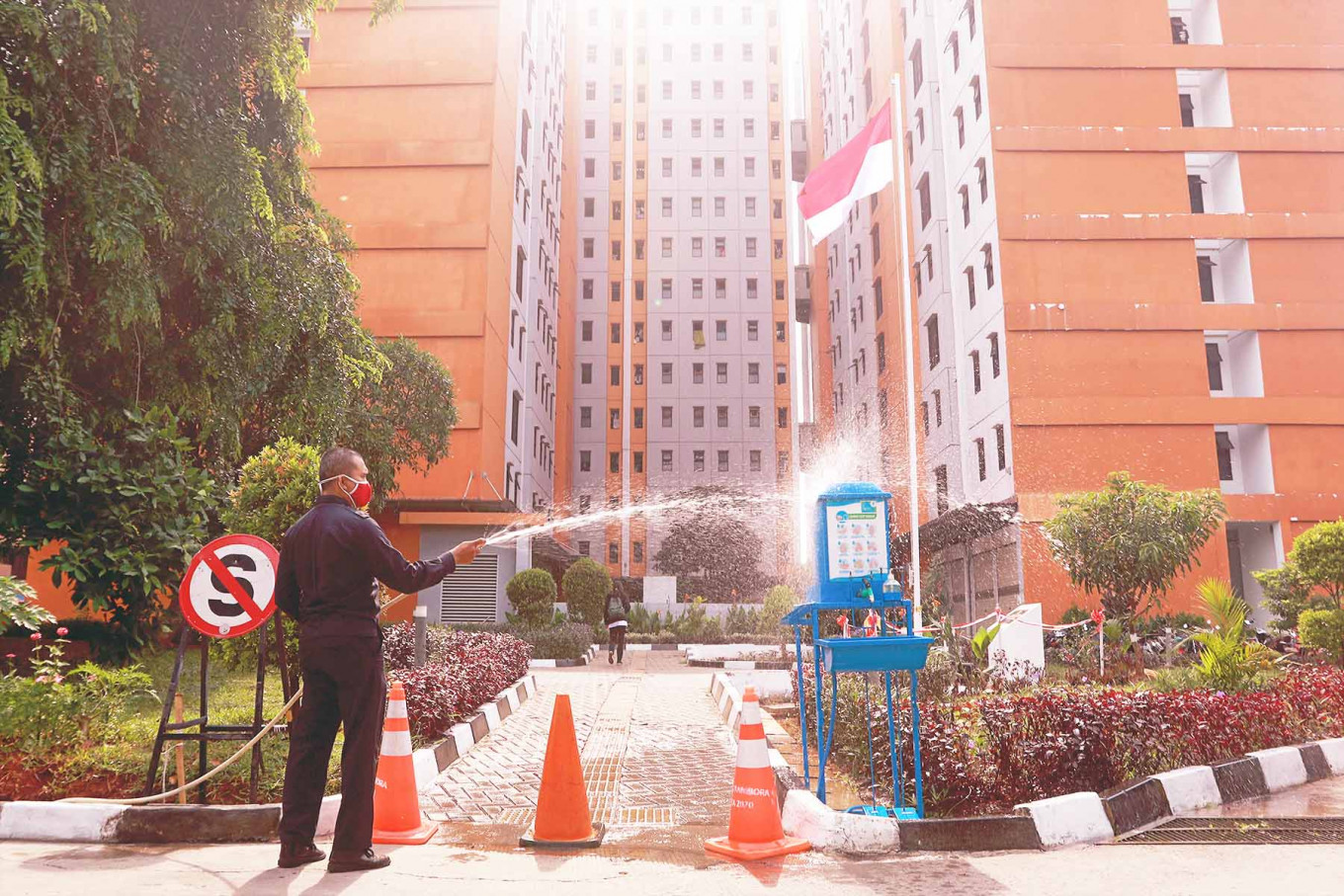Popular Reads
Top Results
Can't find what you're looking for?
View all search resultsPopular Reads
Top Results
Can't find what you're looking for?
View all search resultsGoing beyond the housing backlog, Jakarta needs holistic strategy
The national government’s housing loan facility is a good start but ignores the urban population.
Change text size
Gift Premium Articles
to Anyone
T
he housing backlog has received an undue spotlight. Many government policies intended to reduce the number waiting for housing have not made any substantial dent.
As Indonesia’s population urbanizes, it is time for the government to initiate a holistic housing strategy for urban dwellers. As a start, we ought to debunk the backlog myth. Jakarta’s fixation on an elusive number will never make an impact. Instead, attention should be drawn to market absorption.
The Jakarta administration continues to build. Developers of large apartment projects—5,000 square meters of land or larger—also build to contribute. They are required to construct subsidized housing, which amounts to 20 percent of their commercial areas, on behalf of the government.
Ironically, as per August this year, an estimated 26,000 rusunawa (public rental units) subsidized by the Jakarta administration remained unoccupied. The apartment units in Rusun Pasar Rumput are still vacant despite construction having been completed in September 2019.
The units in Pondok Kelapa under the touted “DP Nol” (zero down payment) program are also not easily absorbed. According to Jakarta’s Housing Agency, only 681 units had been sold as per March 5. This a far cry from the target of 232,214 as outlined in Jakarta’s Mid-term Development Plan (RPJMD) 2017-2022.
Evidently, the backlog numbers we often see in the media are irrelevant. Relentless construction is not the solution if it is not accompanied by an emphasis on market absorption. Developers are eager to fulfil their obligation and help the city’s housing problem, yet their role is limited to physical construction. The onus is on the government to ensure absorption.
First, the government could intervene to encourage wider access to favorable mortgage schemes. What is on the market is beyond the reach of the majority of the population. The national government’s housing loan facility is a good start, but ignores the urban population. Jakarta’s “DP Nol” is not taking off.
The government could devise better policies for the aspiring urban population to enjoy lower down-payment requirements, favorable and/or fixed interest rates and longer amortization terms.
Additionally, people’s needs and affordability levels vary. Therefore, developing a variety of unit types would help increase absorption rates.
Singapore’s public agency, the Housing Development Board (HDB) implements these effectively. Singapore is a nation built on the principle of housing ownership. This belief is manifested in the government’s unwavering support for the HDB to perform its dual role as developer of scalable public housing and as loan provider. While the Singapore model is not replicable elsewhere, we can still draw inspiration from it.
Construction can be done quickly. Flooding the market with ample supply is pointless and wasteful if the goods cannot be absorbed.
Second, long term occupancy and robust living conditions must be meticulously thought through way before construction. Rent arrears of rusunawa have been much discussed in the media. Many units are unoccupied. Again, absorption is overlooked and, especially in this case, so too is professional property management.
Tenants, owners and building managers have a duty to observe their respective obligations and understand the reasons for doing so. For instance, paying service fees on time enables the functioning of shared facilities. Professionalism in building management is a non-negotiable requirement regardless of the types of rusunawa. Bad management causes unnecessary damages and eventually decay.
Third, the government must provide land for housing for the lower- and middle-income groups. Many of its assets are suboptimal such as the strategically located traditional markets. Pasar Rumput is an excellent example of how this can be managed: high-rise apartments above the market. The government could convert others into similar developments more quickly so more people could live in the city, near where they work. Reforming land use policies is vital. Mere physical construction is not the solution.
Land prices have gone up inexorably. They now make up a disproportionately high portion of total development costs. Innovative use of government land could significantly drive down what buyers pay. Additional cost could be saved if the government taps into developers’ obligations to fund construction.
Focusing narrowly on the backlog has lead to policies that are obsessed with construction. To make noteworthy progress, the government needs to formulate a holistic housing strategy, one that takes into account market absorption of what it constructs. That means ensuring people have access to favorable mortgage schemes and actually live in their units long-term and healthily.
***
The writer is executive director of the Jakarta Property Institute.










